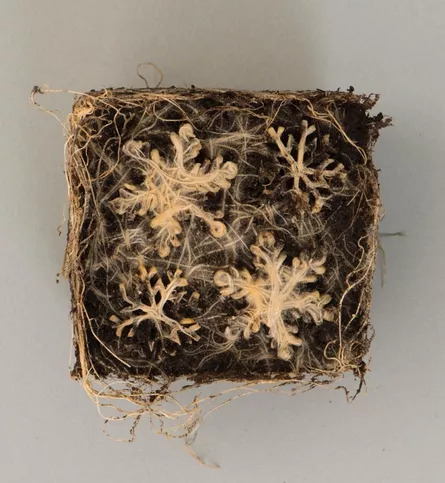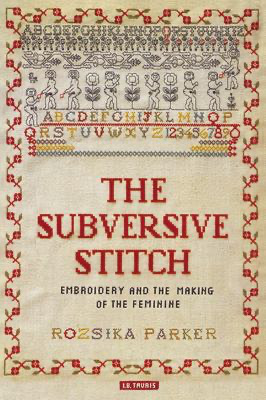Don't wanna be here? Send us removal request.
Text
12th Jan
Artist research, after visiting the exhibit at the Horniman Museum by Chris Charteris I decided to do some additional research.
Charteris is a sculptor, jewellery and carver who trained in Maori carving. His forms are influenced by his cultural inheritance and the energy that he feels from material.


0 notes
Text
11th jan
Today I worked on my frame that was inspired by pomegranates. In ancient Egyptian times the pomegranate symbolised prosperity and ambition and is found on many items of decorative Egyptian art. Once completing this frame I concluded that I also find the back of this embroidery to be really interesting and almost like a work in itself.


0 notes
Text
10th Jan
Chiffon and beads to represent pomegranate seeds. I tied the beads into the fabric to create pleats.
This technique is used for a kind of japanese dyeing called shibori.
Today I also finished the large hoop that I had been working on. All of the sections in it are made of magazine paper. I am pleased with the final outcome although in an ideal world I would have worked on the piece for longer.



0 notes
Text
7th Jan
I bought a damaged silk scarf at a charity shop which I am chopping up for some fabric manipulation. I wanted to use silk but without buying new. The manipulation was inspired by my trip to The Sunbury Gallery where there was an exhibition of work by Keira Graham. Her work inspires me as it is centred around the natural world.

0 notes
Text
6th Jan
Today I was thinking about working with old magazines again to create another piece in a hoop. I decided that I really wanted to push myself and work on a much larger scale than I’m used to. I scrunched up the paper before stitching it to make it more malleable. It is interesting how the scrunched paper takes on a textile feel.

0 notes
Text
5th Jan
I visited Chertsey Museum today which had an extensive display of regency era clothing. I was comparing the amount of work which went into each piece to the clothing we wear today. The styles would have stayed in fashion for much longer periods hat we are used to. Items were often adapted to reflect new styles. This collection was curated over a lifetime by Olive Matthews who started collecting costume as a small child. She didn't set out to create a museum quality collection, but became an adviser to the V&A through her natural desire to collect and learn from our past. I hope to return there for future exhibitions as there are so many more items not on display. It made me think contemplate my own collections and how I might display them in the future.



0 notes
Text
3rd Jan
Here are some photos of some of my recent sketchbook work. I've been really enjoying working in a sketchbook and I feel that is a beneficial part of my practice.



0 notes
Text
3rd Jan
Today I visited The Soden Gallery in Shrewsbury. The style of 'Earthly Paradise', the golden palm trees painting Linda Edwards. She is inspired by The Garden of Paradise and a lot of her work reflects India-Persian art and Medieval paintings. It reminded me of a lot of the artwork I saw in Egypt, especially the use of gold.






0 notes
Text
2nd Jan
Artist Research:
Acaye Kerunen
Kerunen is a transdisciplinary artist from Uganda. She uses techniques such as weaving, sewing and embroidery within her practice, these techniques were taught to her by her mother.
“Her work seeks to disassemble the colonial and patriarchal structures that have long inhibited women's freedom and artistic expression in East Africa”
“she utilizes natural materials including dry banana fibers, raffia, sisal, palm leaves, stripped banana leaves, stripped sorghum stems, and reeds”
The textures in Kerunens work pictured below are really interesting and I like her use of smocking in an innovative way. I also find it interesting how she is challenging the idea in post colonial Africa that women can’t be an artist and breaking stereotypes.

0 notes
Text
1st Jan
Papyrus stitching:
Using DMC I decided to stitch a palm tree onto papyrus. I was aiming for it to replicate some of the art I saw in Egypt, but I don't feel the gold thread gave an opulent enough look to it. Gold paint would have worked better. I could then have stitched into it afterwards.

0 notes
Text
30th December
Artist research:
Diana Scherer is a German artist who works with the roots of grass.

3 notes
·
View notes
Text
30th December
The Subversive Stitch by Rozika Parker reading. Despite predominantly talking about European Embroidery it mentions postcolonialism. My main takeaway from this book was the concept of craftivism and creating craft as a release of rage. The women who I taught in Egypt didn’t appear to feel rage towards their role as women in society but on reflection I almost feel it on their behalf.

0 notes
Text
28th December
Fabric Family Memories
Since thinking about the suffolk puffs yesterday I’ve been thinking about fabrics that I remember from when I was younger and also asking my parents.
One of my earliest memories actually was a skirt bought for me by my great auntie and uncle. I don’t have any photos of it but I remember that it was a puffy skirt covered in smiley faces.
My mum also says she remembers having matching green velvet party dresses that my grandma made; one for her and one for my auntie. My mum had the more grown up version since she is 5 years older than her sister, and her little sister's one had a ribbon trim and puffed sleeves. Her little sister was very excited to have the same dress, but my mum aged about 11 was a bit embarrassed by matching a 6 year old.
0 notes
Text
28th December
Research: Suffolk Puffs
I came across this website which talked about the use of Suffolk puffs in the past re-using straps of household fabrics to make a quilt.
I’m fascinated by the beauty of these quilts but also the stories they must tell and memories they hold.
Despite the fact that I’ve mainly been looking at Egyptian culture for this module I think I want to branch out into culture as a whole as I feel that this would be in keeping with my practice.
I was recently sent an old patchwork quilt made of lots of tiny pieces of silk. It dates to victorian times and shows how every scrap of fabric was used again where possible. This quilt came from a quite well-off family which is why the scraps were silk and satin pieces of dresses rather than a working class quilt which would comprise of scraps of cotton fabric.

1 note
·
View note
Text
26th December
Today I decided to use my sewing machine and gather some pieces of fabric. I am pleased with the effect that I managed to create by gathering the fabric using a long straight stitch on the sewing machine. I was inspired by traditional smock dresses.
Smocking is a term for the manipulation of fabric, creating patterns with embroidery stitches over pleated fabric. The pleated fabric makes the garment more flexible.
Smocking has a long history. Smock dresses were worn by men and boys as workwear throughout the 19th century. They were usually sewn in the home by women. They had dropped out of favour by the mid 19th century.
Smocking became a popular style for ladies blouses in the 1920s and girl's dresses in the mid 20th century.

0 notes
Text
December 22nd
I started working on a frame inspired by pomegranates.
I have gathered a lot of reclaimed materials in a red colour palette. These have mostly come from charity shop fabrics and also from a scrap charity that I enjoy visiting in Church Stretton.
I began by creating some padding with felt and deep red velvet. This gives a good height to the work. I am giving some thought to how the piece will progress.
0 notes
